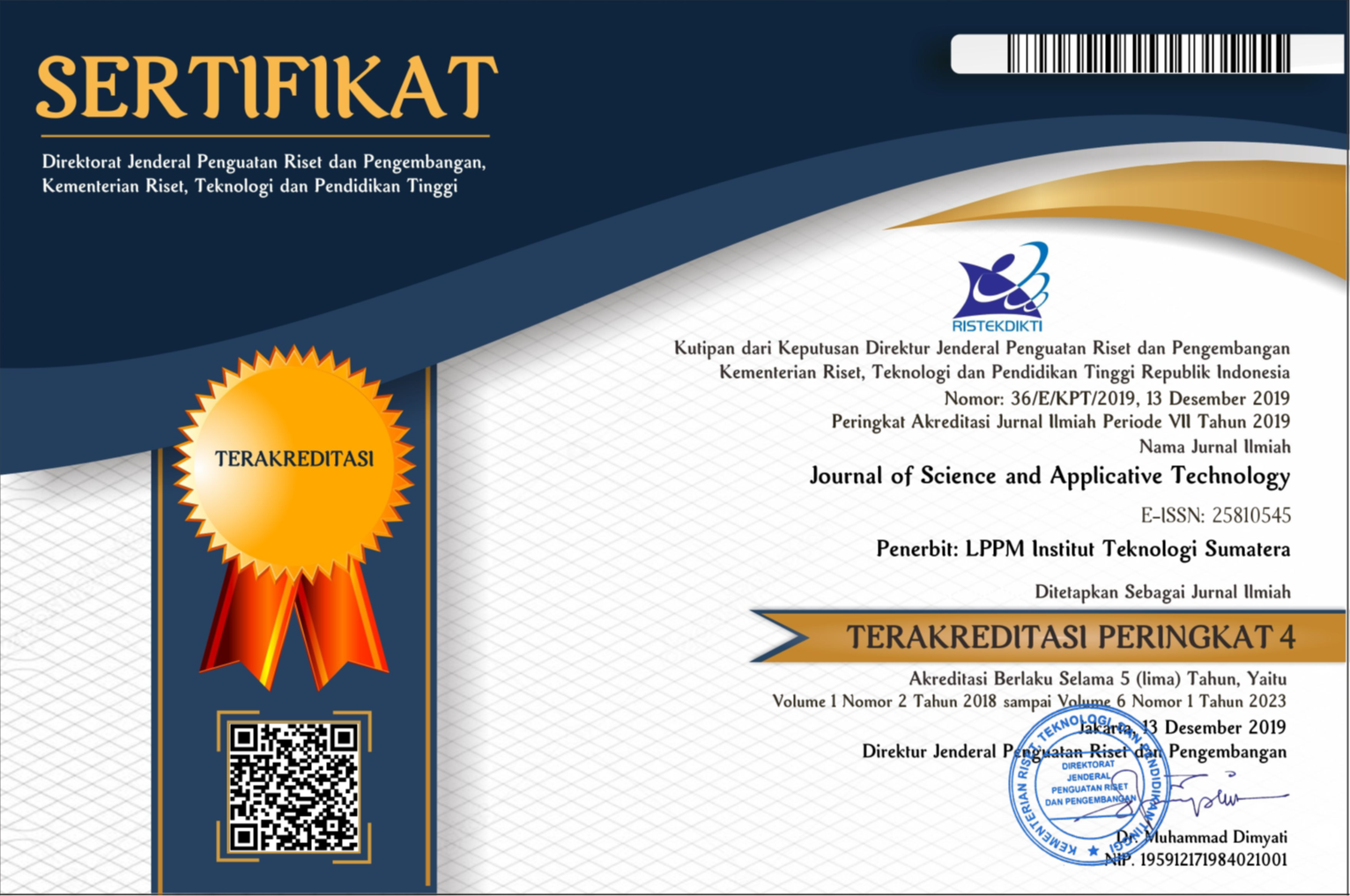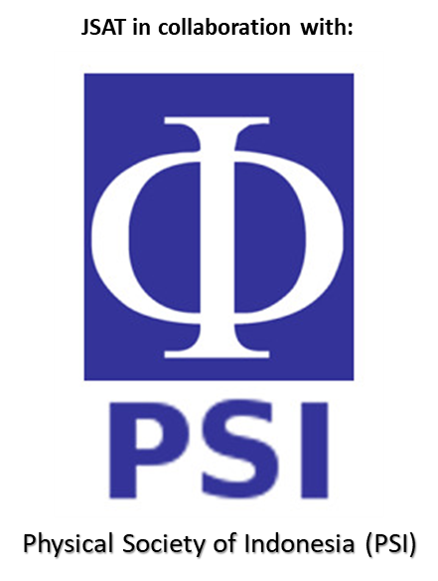Identifikasi Struktur Geologi dan Petrografi di sekitar Observatorium Astronomi Lampung Gunung Betung
Abstract
Lampung Astronomical Observatory (LAO) is located on Betung Mountain which is quite close to the Semangko active fault zone. Betung Mountain is part of the Bukit Barisan which is located west of the city of Bandar Lampung. This mountain has an altitude of about 1200 meters above sea level. There are 6 interesting stations. Most of the stations are located on the upper slopes of Betung Mountain. In the Talang Aji area, there are 2 springs. The other 4 stations consist of waterfalls with varying heights: Talang Teluk waterfall (30 m), Talang Rabun waterfall (20 m), Betung waterfall consists of two minor terraced waterfalls with a height of 5 and 10 m respectively, and Kubu Jambu waterfall (12 m). In general, the orientation of the faults of Mt. Betung was northeast-southwest. The faults are also associated with several waterfalls found in the field. From the joint data processing, it can be interpreted that the fault formed on Betung Mountain is normal. The lithology of Betung Mountain is dominated by volcanic deposits in the form of tuffs. In certain rivers, there are outcrops of lava igneous rock in the form of Andesites. Andesite lava in the northern and southern parts of Betung Mountain has different characteristics.
Downloads
References
[2] R. McCaffrey, “Slip vectors and stretching of the Sumatran fore arc,†Geology, vol. 19, no. 9, pp. 881–884, 1991, doi: 10.1130/0091-7613(1991)019<0881:SVASOT>2.3.CO;2.
[3] K. Sieh and D. Natawidjaja, “Neotectonics of the Sumatran fault, Indonesia,†J. Geophys. Res. Solid Earth, vol. 105, no. B12, pp. 28295–28326, 2000, doi: 10.1029/2000jb900120.
[4] D. H. Natawidjaja et al., “Source parameters of the great Sumatran megathrust earthquakes of 1797 and 1833 inferred from coral microatolls,†J. Geophys. Res. Solid Earth, vol. 111, no. 6, pp. 1–37, 2006, doi: 10.1029/2005JB004025.
[5] Travis and B. Russell, Classification of Rocks, Colorado. USA: Quarterly of the Colorado School of Mines, 1955.
[6] S. S. Nalbant, S. Steacy, K. Sieh, D. Natawidjaja, and J. McCloskey, “Seismology: Earthquake risk on the Sunda trench,†Nature, vol. 435, no. 7043, pp. 756–757, 2005, doi: 10.1038/nature435756a.
[7] K. Sieh et al., “Earthquake supercycles inferred from sea-level changes recorded in the corals of west Sumatra,†Science (80-. )., vol. 322, no. 5908, pp. 1674–1678, 2008, doi: 10.1126/science.1163589.
[8] O. Bellier et al., “Paleoseismicity and seismic hazard along the Great Sumatran fault (Indonesia),†J. Geodyn., vol. 24, no. 1–4, pp. 169–183, 1997, doi: 10.1016/s0264-3707(96)00051-8.
[9] J. A. Katili and F. Hehuwat, “On the occurrence of large transcurrent faults in Sumatra, Indonesia,†J. Geosci., vol. 10, 1967.
[10] D. H. Natawidjaja, K. Sieh, S. Ward, R. Edwards, B. Suwargadi, and J. Galetzka, Large active faults along the Sumatran plate margin and their seismic threat to Indonesia, Malaysia and Singapore. Yogyakarta: Geosea-Indonesian Association of Geologist, 2001.
[11] A. Mangga, Amirudin, T. Suwarti, S. Gafoer, and Sidarto, Geologi of Tanjungkarang quadrangle, Sumatra. Bandung: Geological Research and Development Centre, 1994.
All the content on Journal of Science and Applicative Technology (JSAT) may be used under the terms of the Creative Commons Attribution-NonCommercial 4.0 International License.
You are free to:
- Share - copy and redistribute the material in any medium or format
- Adapt - remix, transform, and build upon the material
Under the following terms:
- Attribution - You must give appropriate credit, provide a link to the license, and indicate if changes were made. You may do so in any reasonable manner, but not in any way that suggests the licensor endorses you or your use.
- NonCommercial - You may not use the material for commercial purposes.
- No additional restrictions - You may not apply legal terms or technological measures that legally restrict others from doing anything the license permits.





















